Foods of War: Sloosh
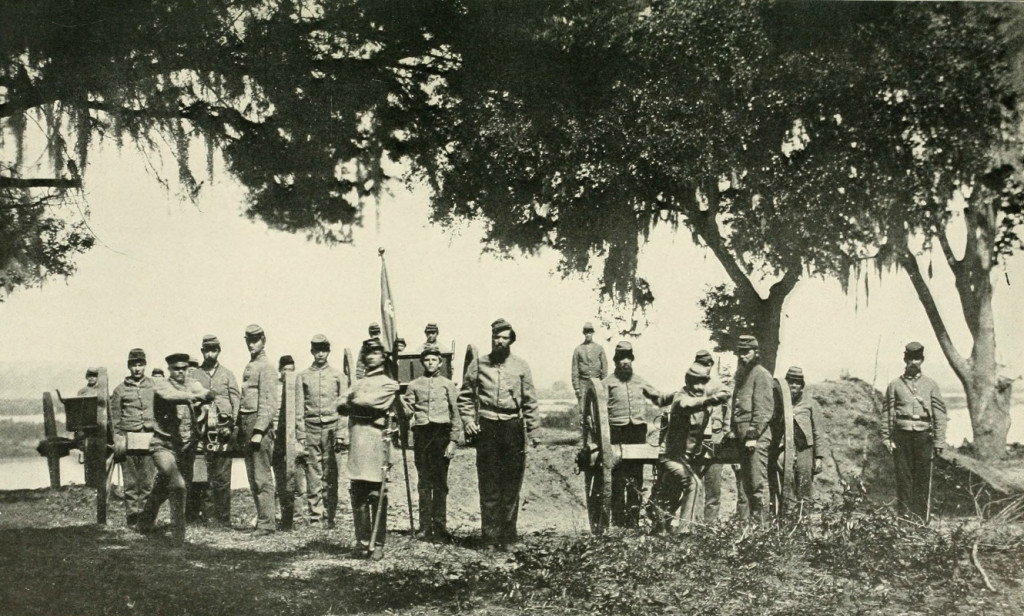
Back in April, I opened this Foods of War series with a recipe and review of hardtack, an ancient ration that gained infamy among Union troops during the American Civil War. The ingredients were simple: wheat flour, water, and maybe some salt, mixed into a dense dough, rolled and cut into biscuit sized squares, and baked to tooth-chipping hardness.
Understanding what Union forces ate prompts the obvious question of what southern forces consumed. Union blockades meant that southern troops had limited access to battlefield staples of the period, most notably wheat flour and coffee (the Union, conversely, had limited supply of the third pillar of war consumables: tobacco). For the latter, southern soldiers would make do with chicory or peanuts to stretch their coffee supply (a flavor many in New Orleans still enjoy today). For the former, rations of cornmeal were issued. While wheat and rice were grown in the mountain and coastal south, respectively, corn was the most widely available staple grain. In addition to cornmeal, troops were rationed salt pork or bacon, along with some coffee (or coffee substitutes), salt, and perhaps some peas or beans.
There were many variants on how these simple cornmeal and bacon rations were prepared. Some soldiers would pool their rations and have one man designated as a cook. Under this scheme, the cornmeal and bacon grease could be cooked into a large skillet sized cake, known as corn pone, which might loosely resemble a modern cornbread. When the bread began to go bad, it was crumbled into a soup or stew, known as a cush, which (generously) tasted a bit like porky polenta. Another variant, called sloosh, has been described by Civil War historian Shelby Foote as such:
In the southern army, you ate something called “sloosh.” You got issued cornmeal and bacon and you fried the bacon, which left a great deal of grease in the pan. Then you took the cornmeal and swirled it around in the grease to make the dough and make a snake of it and put it around your ramrod and cook it over the campfire. That was sloosh. They ate a lot of that.
Another manner of preparation would have been what was colloquially known as hoecake. This preparation has ancient origins as a Native American food first adopted by early colonists and slaves. Slaves would combine cornmeal and water to form dough, which was then flattened into a cake and cooked on the flat edge of a hoe over an open fire. This practice was modified by southern soldiers, using a cast iron pan if their company was luck to have one.
Preparation
With this history in mind, the description of various cornmeal preparations initially excited me. After all, cornbread is delicious and many of these descriptions involve bacon, which as a millennial male I’m socially obligated to celebrate. With this hopeful disposition I set out to make two variants on how southern soldiers would have consumed their cornmeal ration: hoecake and sloosh.
Initially, I wanted to make these as authentic as possible, which is to say dough simply made from bacon drippings, cornmeal, and water. So first things first, I fried up some thick cut bacon in a well-seasoned cast iron skillet.
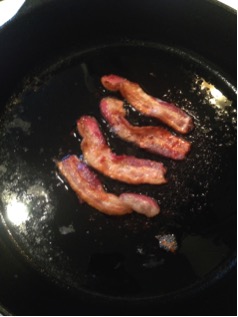
Upon combining the ingredients for the dough, I quickly realized that there was no way this dough was going to roll out without the addition of some type of binder. Some accounts of this dish mention an egg, and while that feels a bit luxurious, I added one to help make the mixture more workable.
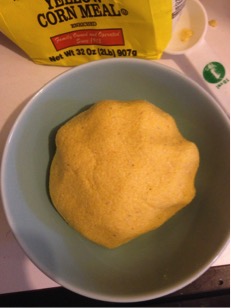
I took on the sloosh variant first, but since my rifle and ramrod were in the shop I opted for a thick skewer. Even with an egg, and even after allowing the dough to rest so that the cornmeal could thoroughly hydrate, it was nearly impossible to roll out and snake as described by Dr. Foote. I concluded that the only way soldiers could have accomplished this was through daily practice. Not having this skill at my disposal, I opted to form the dough around a skewer.
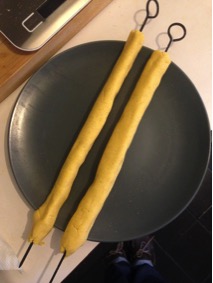
I don’t have a campfire but I do have a grill. So I stepped out on a cold January morning and fired it up to cook some breakfast. The biggest challenge was keeping the cooking even. Some bits blackened while others remained raw. After about 10 minutes and some maneuvering, I ended up with a skewer that resembled a dense and unevenly charred cornbread.
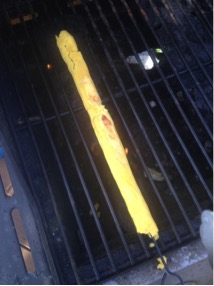
For the hoecake preparation, I took the same dough and formed it into a patty with a pancake’s size and thickness. I wagered that my 12-inch cast iron skillet accurately matched the thickness of a mid-19th century hoe, so I heated up some residual bacon fat and began to fry the cake. It browned rather quickly on both sides but didn’t rise or visibly become less dense. However, it did smell pretty good, reminiscent of freshly baked cornbread and bacon.
Tasting
Right off the bat, both preparations looked better than hardtack. They had some nice color and resembled food rather than subway tiles. I dug into the skewered sloosh first and got bits of dry, crumbly, cornmeal flavor interspersed with bitter bites of blackened dough. At best, it was reminiscent of stale cornbread that had been reheated. There was little bacon flavor, despite a generous addition of fat to the dough.
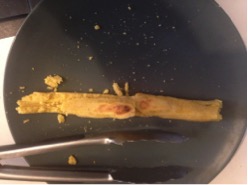
My hopes were higher for the hoecake; the browning was more consistent, it wasn’t charred, and it not only contained bacon fat, it was also cooked in bacon fat. I was wrong. Once again, incredible dryness and a density that was way worse than the sloosh. And again, no discernable bacon flavor.
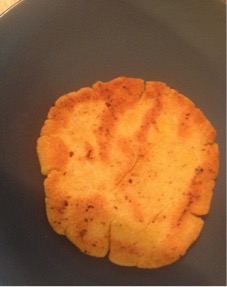
Pairing
So what does the ambitious sommelier of the south pair with such a delicacy? Like hardtack, I thought a beer was in order to wash down this dense, corny pseudo-bread. Since there’s bacon involved (even if you don’t taste it very much you still get to smell it during cooking), my mind is immediately drawn to breakfast and coffee. For my money, you’d be hard pressed (if you’ll pardon the pun) to find a better coffee beer than Founder’s Breakfast Stout. This beer boasts big coffee flavor with a smooth mouthfeel and some nice dark chocolate bitterness. Furthermore, at 8.3% ABV, you’ll quickly forget that your breakfast of sloosh has the texture of warm Playdough mixed with sand. This beer is one of my favorites, even without sloosh, namely because it is instantly recognizable as a coffee and chocolate beer without cloying sweetness or heaviness that would relegate it to purely dessert beer territory, such as Young’s Double Chocolate Stout.
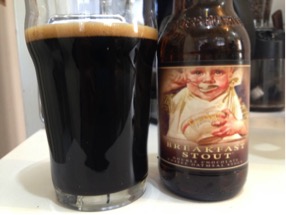
With the horrors and immense human toll of the American Civil War well documented and widely known, it seems a bit flippant and of questionable historical value to ask between the Union and the Confederacy, “who had it worse at chow time?” However, having prepared and consumed both, I suppose the one benefit of sloosh and hoecakes is that they are at least freshly prepared, whereas hardtack could have been sitting around for quite a while and potentially attracted all sorts of extra protein of the insect variety. But dense and chewy/gritty vs. simply dense is a distinction without a difference. Both are remarkably unpleasant.
With this in mind, most of us have had cornbread before, and sloosh/hoecakes, even prepared in this rather spartan fashion, can’t help but remind me of better meals and times. I like to think that the minds of the men in gray went to similar memories when they sat down for dinner on the battlefield.
James Sheehan is a homebrewer and cider-maker. He holds an MA in Terrorism, Security, and Society from King’s College London.

